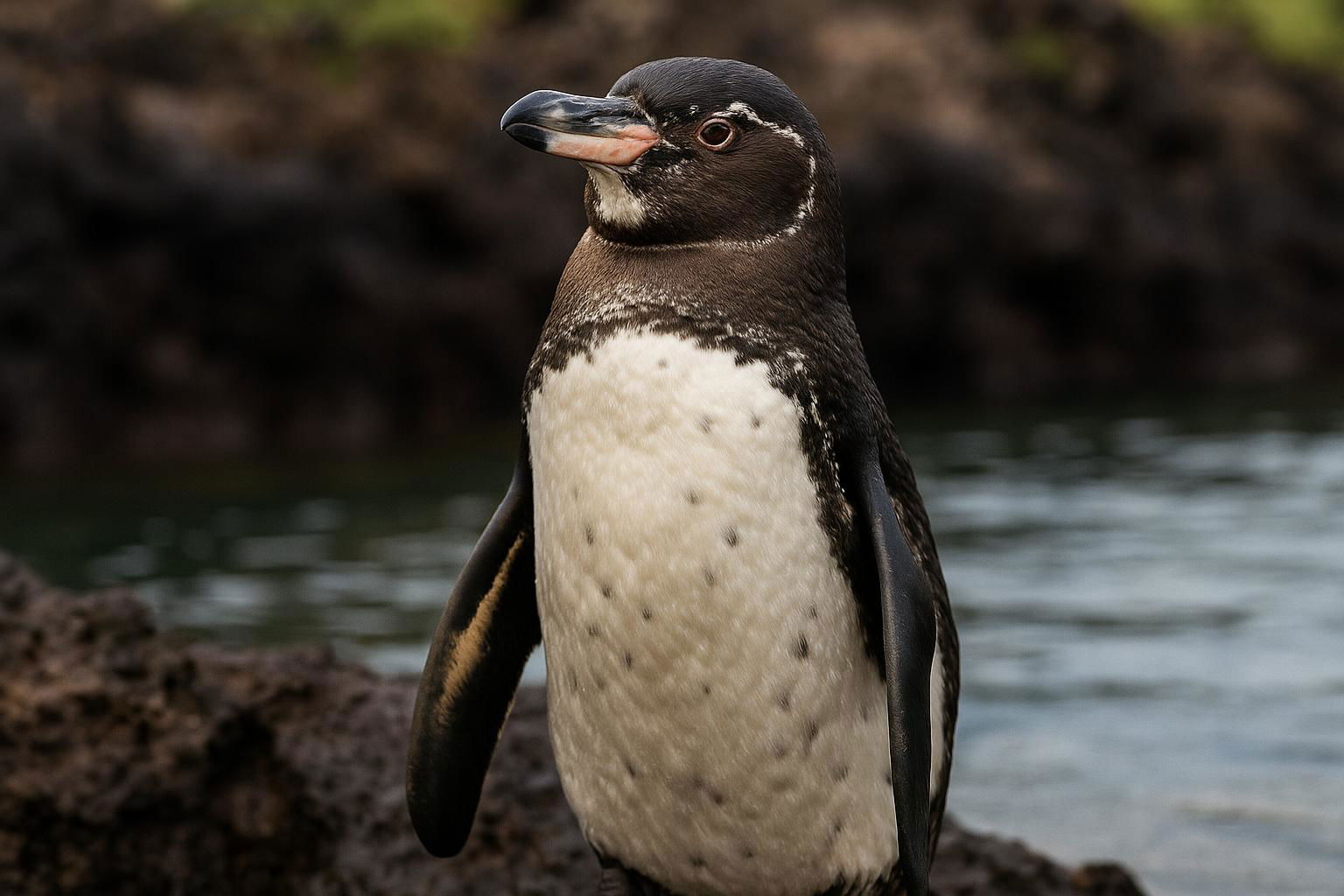
Galapagos Penguin
Spheniscus mendiculus
The Galapagos Penguin (Spheniscus mendiculus) is a unique and fascinating species of penguin native to the Galapagos Islands. It is the only penguin species found north of the equator, residing mainly along the coastlines and islets of Isabela and Fernandina islands. This species is relatively small, standing about 49 centimeters (19 inches) tall and weighing between 1.7 and 2.6 kilograms (3.7 to 5.7 pounds). The Galapagos Penguin has a distinctive black-and-white coloration with a black band running under its chin and white lines outlining its head, creating a striking appearance.
Adapted to a warmer climate than most other penguins, the Galapagos Penguin has evolved unique behaviors and physical traits to survive in this environment. They are skilled swimmers, using their flipper-like wings to propel themselves through the water at impressive speeds while hunting small fish and crustaceans. To cope with the heat, they employ behaviors such as panting, frequent swimming, and standing with flippers extended to release excess heat.
The population of Galapagos Penguins is small and vulnerable, currently classified as Endangered due to threats like climate change, predation by invasive species, and human activities. Conservation efforts are in place to protect their habitat and reduce these threats. The Galapagos Penguin is a remarkable example of adaptation and survival, embodying the unique biodiversity of the Galapagos Islands.

 All Species & Breeds
All Species & Breeds
 Highland Cattle
Highland Cattle
 Miniature Donkeys
Miniature Donkeys
 All Species Directory
All Species Directory
 Highland Cattle in Virginia
Highland Cattle in Virginia
 Miniature Donkeys in Texas
Miniature Donkeys in Texas












